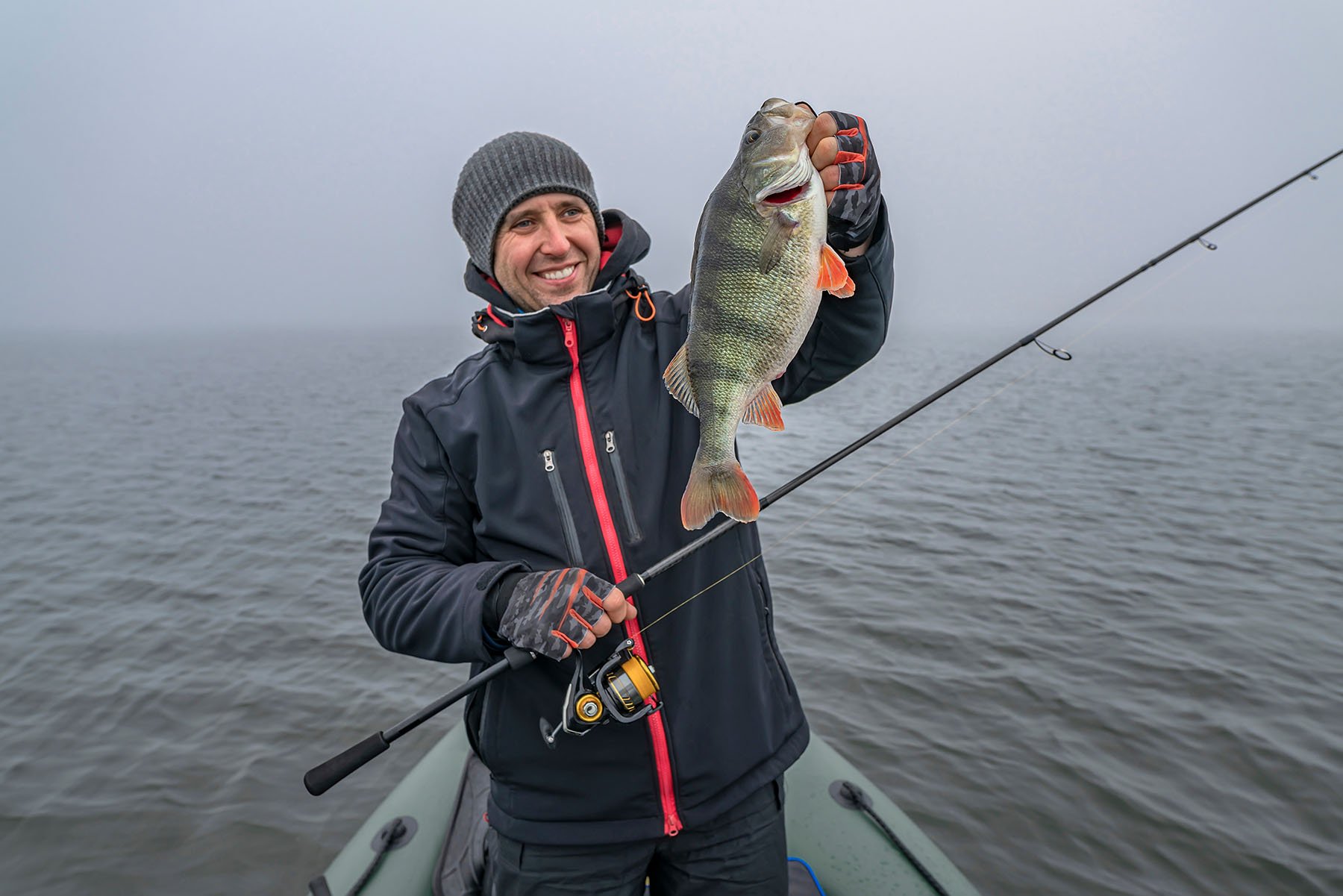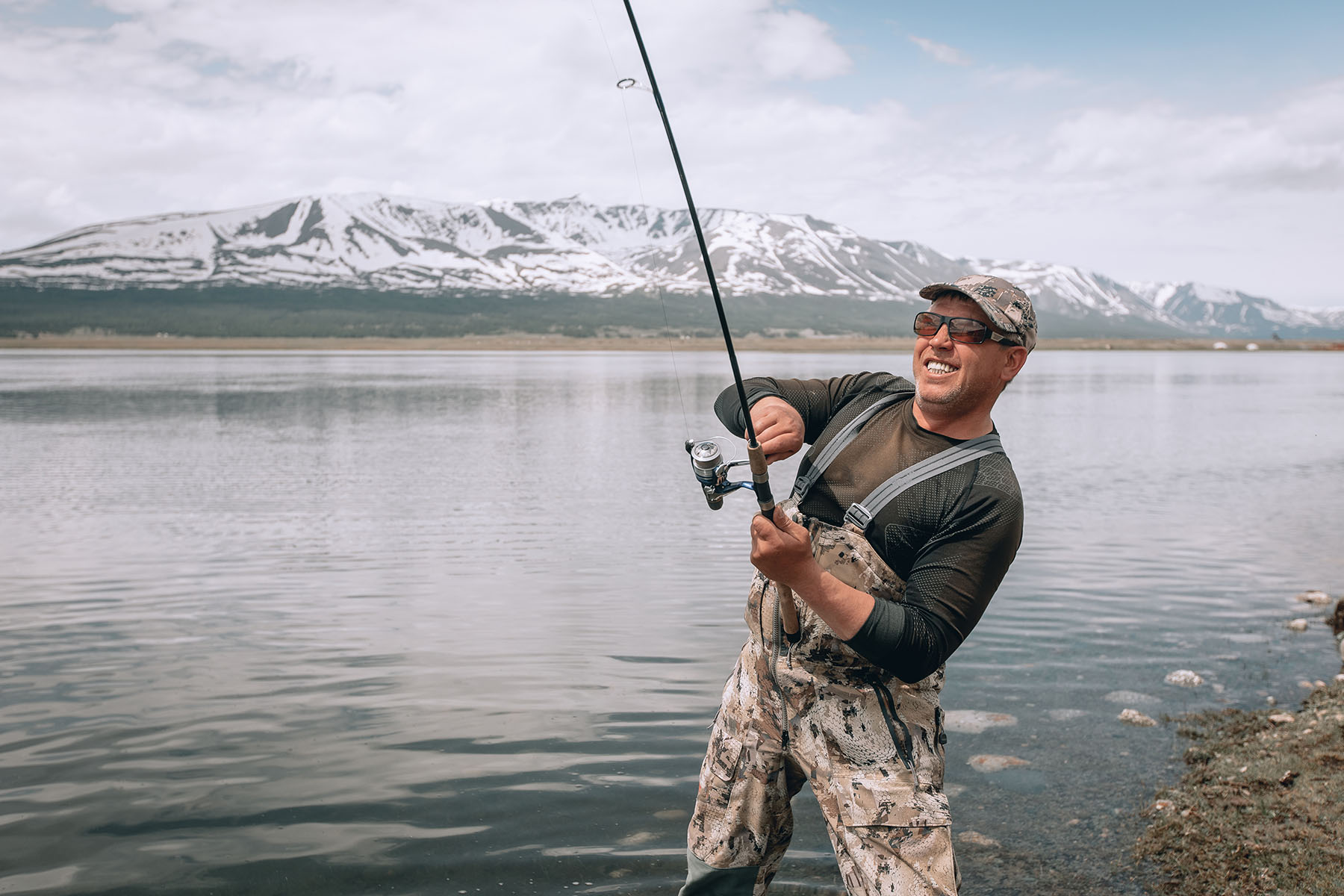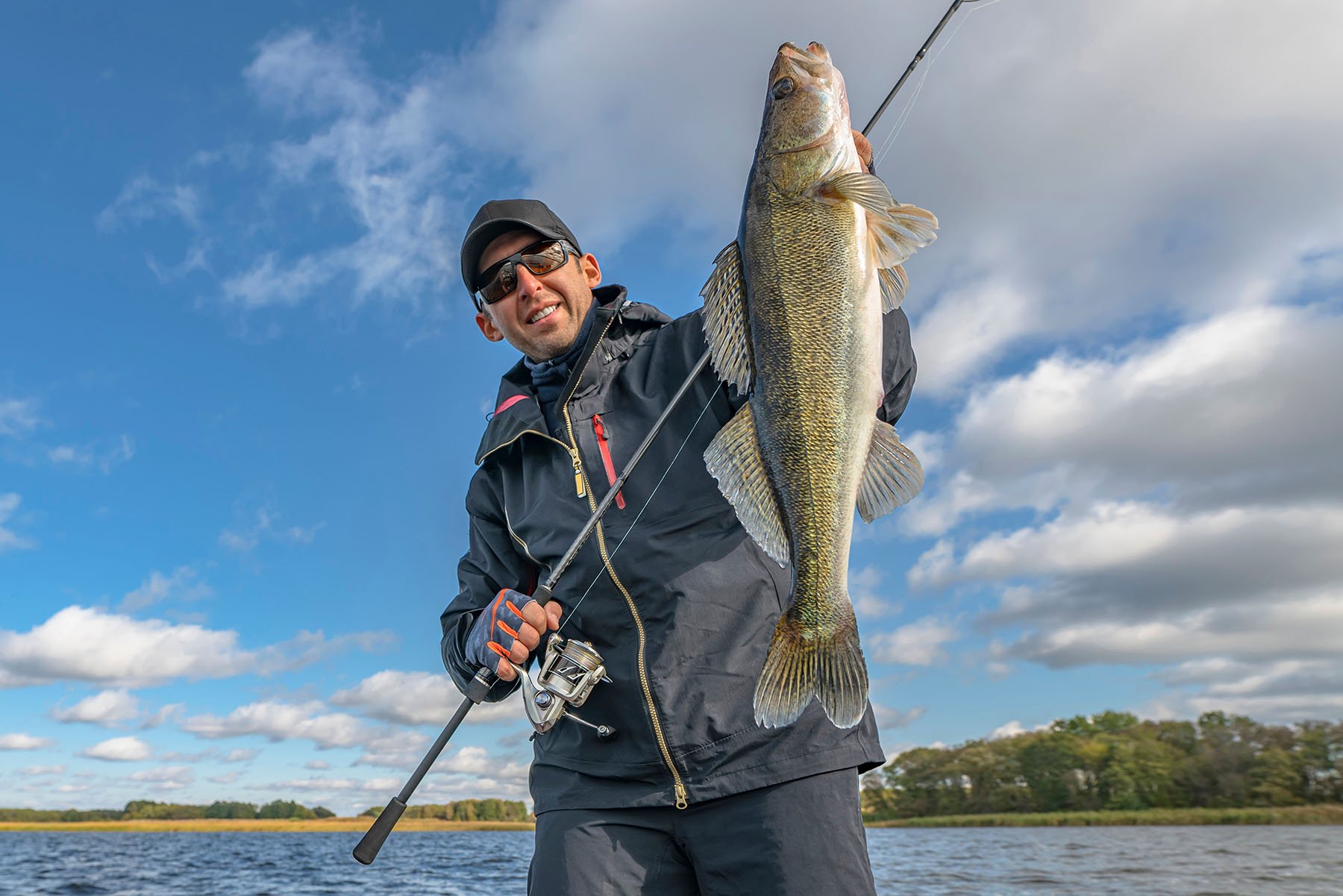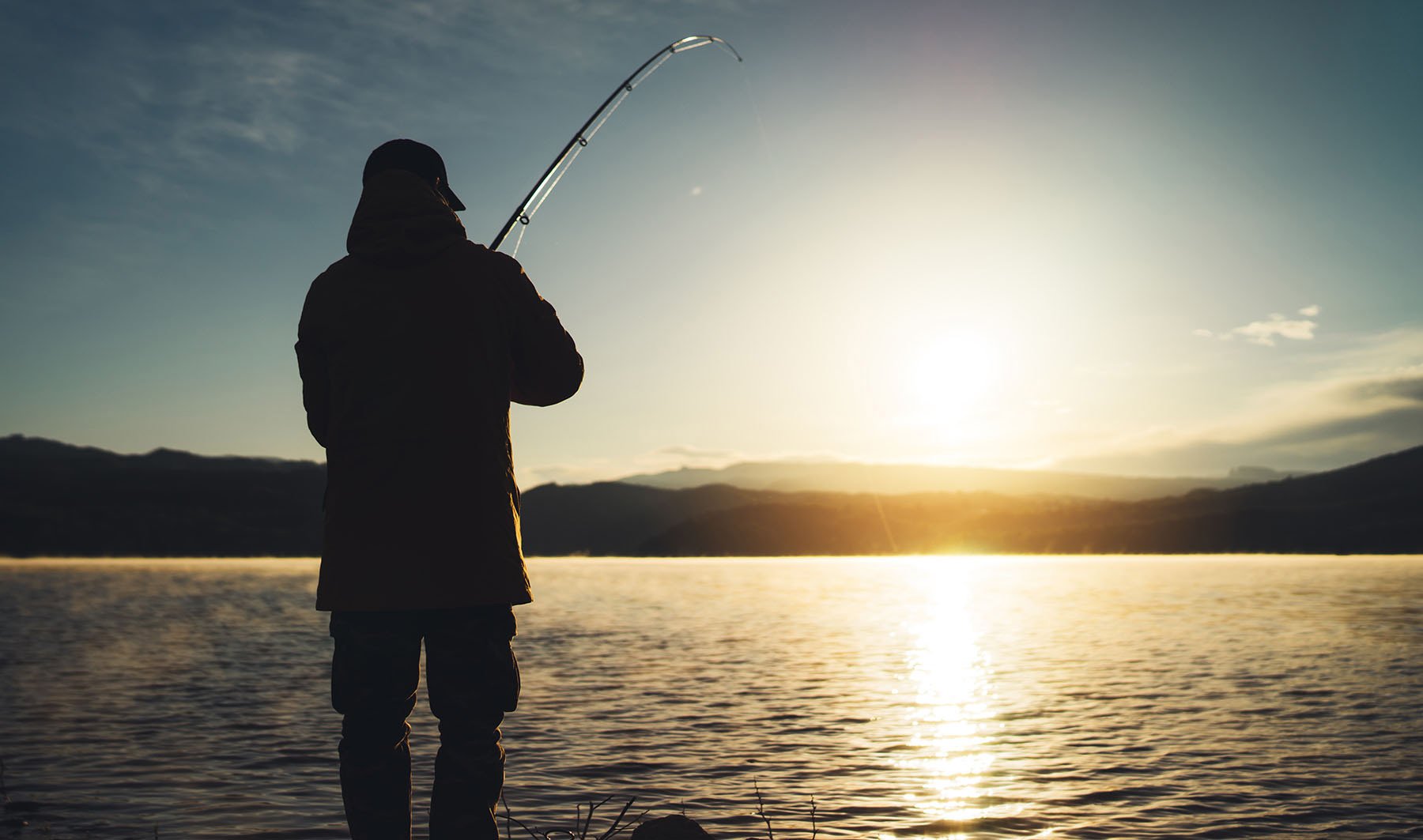While you can get universal types of fishing rods, there are differences in the appropriate accessories for carp, catfish and trout fishing. Reaching for specific options will definitely make it worth your while.
Types of fishing rods based on structure
The basic division of rods is by material and structure.
Telescopic rods
The most frequently used rod is telescopic – collapsible. It is easy to transport, as you can collapse it into a smaller size, and it can be pulled back out quite simply.
Moreover, it is perfect for beginner fishermen.
Two or more piece rods
More experienced fishermen prefer rods made of two or more pieces, which have great features. The whole rod is divided into several parts - most often from two to six. The fewer the parts, the better the quality and durability of the rod.
The disadvantage of these rods is their difficult handling. Some parts of the rods may be up to 180 cm long. If the fisherman has a smaller car, a 3-piece rod is enough. Such a rod has a transport dimension of up to 1,4 m.
Casting weight of the rod
The casting weight is given in pounds (lb). However, in case of some telescopic rods, it can also be in grams. The higher the casting weight, the more suitable the rod is for distant casting.
- A very light rod with a casting weight up to 2,75 lb, is suitable for bait boat fishing, or light casting. The ideal casting weight is a maximum of 1 000 g.
- The most commonly used weight is 3 lb (casting weight up to 1 300 g). It can be cast far, and the rod is not stiff.
- If you want to cast more than 100 meters, you need a 3,50 lb. This allows you to cast even sinkers up to 1 500 g.

Rod materialsThe most used types of materials for the production of fishing rods:
The most used types of materials for the production of fishing rods:
- Composite rods are flexible, return quickly to their original position and are used for fly-fishing.
- Fibreglass rods are the most common and have excellent properties.
- Carbon fibre rods can handle even very heavy fish, but they are conductive and must not be used during storms.
- Bamboo rods are perfect rods for small fish.
Types of rods by type of fish and techniques
Your rod choice will depend on the preferred type of fish and technique.
Carp rods
Carp rods are used not only when fishing for carp, but also for bream or grass carp. Thanks to their construction, they can withstand even the heaviest fish.
The rods are telescopic or made of two or three pieces. They range from 3 to 4.5 metres and are used with different casting weights. They are quite heavy – you will appreciate bringing a rodpod with you on your fishing trips.
You can choose your carp rod according to the following conditions:
- where you want to fish – river or lake;
- whether you will cast lures or carry them thanks to a bait boat.
If you decide to fish in lakes and cast from shore, you will need a longer and harder rod that has large guides. These make it easier to run the line through the guides. Look for rods with a length of 3,9 m and a casting weight from 3 lb.
If you stay on the shore and transport the bait by a remote controlled boat, we recommend you to reach for light rods from 3,6 to 4,2 m. Thanks to the lighter rod, you will ensure that the fish will not unhook itself as easily as with heavy rods.
When fishing in rivers, consider not only the stiffness, but also the length of the rod, which you need to adapt to the size and strength of the river current.

Catfish rods
Catfish is the strongest fish that can be caught in Slovakia. Whether you catch it will also depend on the type of the catfish rod you choose.
When fishing from a boat, we recommend that you reach for rods with a maximum length of 2,5 m. If the rod is too long, it would be almost impossible to catch the catfish. For such fishing, a rod with a maximum weight of 300 g will be sufficient.
If you are going to fish for catfish from the shore, we recommend that you get rods with a length starting at 2,7 m. If you are casting over 100 meters, you will appreciate a longer rod (3,3 m) with the casting weight of at least 500 g.
Feeder rods
Feeder rods are suitable for catching small and medium-sized fish. They are precise and sensitive with the characteristic thin flexible feeder tip which can be changed according to the strength of the current in which you fish.
The most commonly used rod is the one with a length of 3,6 m. If you are going to fish at shorter distances, a rod with a length of 3 m will do. If you are going to cast at long distances from the shore, or in strong currents, you need to keep the rod tip as high as possible.
These rods have larger guides – thanks to them, you can use thicker line.
Feeder rods are divided into several categories:
- Picker rod: the finest rod with a maximum length of 3 metres, suitable for fishing close to the shore
- Light feeder rod (perfect for roach, bleak and bream), Medium, Medium-Light, Medium-Heavy (most used – perfect for longer distances – up to 60 m), Heavy and Extra-Heavy (can handle catfish).
Feeder rods are usually supplied with 3 tips, which can be made of composite (softer) or carbon (stiffer). You can also easily check their hardness by how much they bend when you put them in a horizontal position.
Spinning rods
Spinning rods are used to cast and pull a lure towards you. Such a method is used when fishing for predatory fish. When choosing this type of rod, focus on the following questions:
- what kind of fish do you want to catch?
- where will you fish?
- what are the properties of a given body of water?
Spinning rods are divided according to the size of the fish you are interested in:
- Light rods (trout rod)
- Medium rods (most common - zander, asp)
- Heavy rods (rod for pike and catfish)
- Competition rods (most often used by competitive fishermen)
The most important parameter of the spinning rod is its length. Short rods up to 2,5 m are used for smaller water areas or for fishing from a boat. Larger rods are perfect for larger areas and longer casts.
The advantage of the grip is that it affects the handling of the rod. Especially in the cold months, it is not advisable to use a rod with a very long handle, which could grab on clothing.

When fishing for trout or perch, get a rod with a maximum casting weight of 10 g (ultra-light). For medium rods, a weight of up to 30 g will be enough, but if you are not fishing for catfish in a large stream, choose a rod with a casting weight of 40 g.
The perfect rod for a beginner
If you're just starting out, don't reach for the most expensive brands. Rods are sensitive to proper use – if you break one, it will cost you dearly.
Do not get ultra-thin rods, rather choose composite ones from the middle price category. The perfect brand for this type of rod is Delphin.
If you need a reel for your rod as well, try something from this offer.
 Musical Instruments
Musical Instruments



 Water Sports
Water Sports




 default
default




